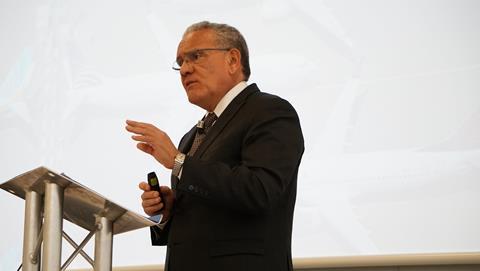IATA’s safety chief identifies maintenance as the biggest operational challenge airlines face on moving to a full restart of services after the pandemic, in part because uncertainty on when this might happen makes it harder to plan for.
The association’s senior vice-president safety and flight operations Gilberto Lopez Meyer highlighted the issue when asked about the challenges airlines will face during the recovery at a media briefing today.

”The maintenance challenge is going to be massive. Like never in history,” he says, pointing to the number of aircraft that have been – and remain – out of service.
”At the peak of the crisis [in May] we had more than 18,000 aircraft parked. There were problems to find space even to park these aircraft,” he says
”So the maintenance part, among many others, is one of the areas we have to very carefully plan, with the complexity that nobody knows when it [return to full service] is going to happen. Because the more time it takes, the more complex are the maintenance activities we need to perform to the aircraft to be able to get them ready to return to service.”
Ensuring aircraft are ready to return to service is not the only operational issue airlines face with so much capacity still grounded because of the pandemic. One of the other major challenges is ensuring the currency of crew, so they are able to fly when capacity is increased.
”You can imagine with the reduction of international flights at this moment, thousands and thousands of pilots have lost recency, because they have not flown enough,” he says.
”This is even more critical for airlines that don’t have their own simulator or training facilities and they need to pay someone else to do these activities, sometimes in other countries and having to cross borders,” says Lopez Meyer. ”And this is why it has been very difficult for many airlines to cope with that.

”Some of the airlines have taken the option of training in the real aircraft, with engines on – but it’s very expensive,” he explains. ”Some airlines have taken the decision to take their crews to another country, stay there and quarantine for 14 days and then take the training – which increases the cost and also the availability of their own crew members.”
But he believes the training side “seems to be in a good situation” because airlines, operators and authorities have found ways to implement solutions.
”It has been a combination of many things that have been implemented, and the good news is the industry has performed well during these extraordinary times on this very specific safety-critical challenge we have faced recently,” Lopez Meyer says.


























